A water softener removes minerals from water; that means cleaner laundry, a longer life for water-using appliances, less mineral buildup on plumbing fixtures and lots of other benefits. And with some basic water softener maintenance, it can provide these benefits for 20 years or more, trouble free.
7 Tips for Water Softener Maintenance
1
/
8

How a Water Softener Works
In a water softener, water flows down through the resin tank, which is filled with salt-coated polystyrene beads. Minerals in the water stick to the beads and softened water flows out of the tank. At scheduled times, the minerals are rinsed off of the beads and flushed down the drain while salty water from the brine tank renews their salty coating.
Plus: How to Repair a Water Softener
2
/
8
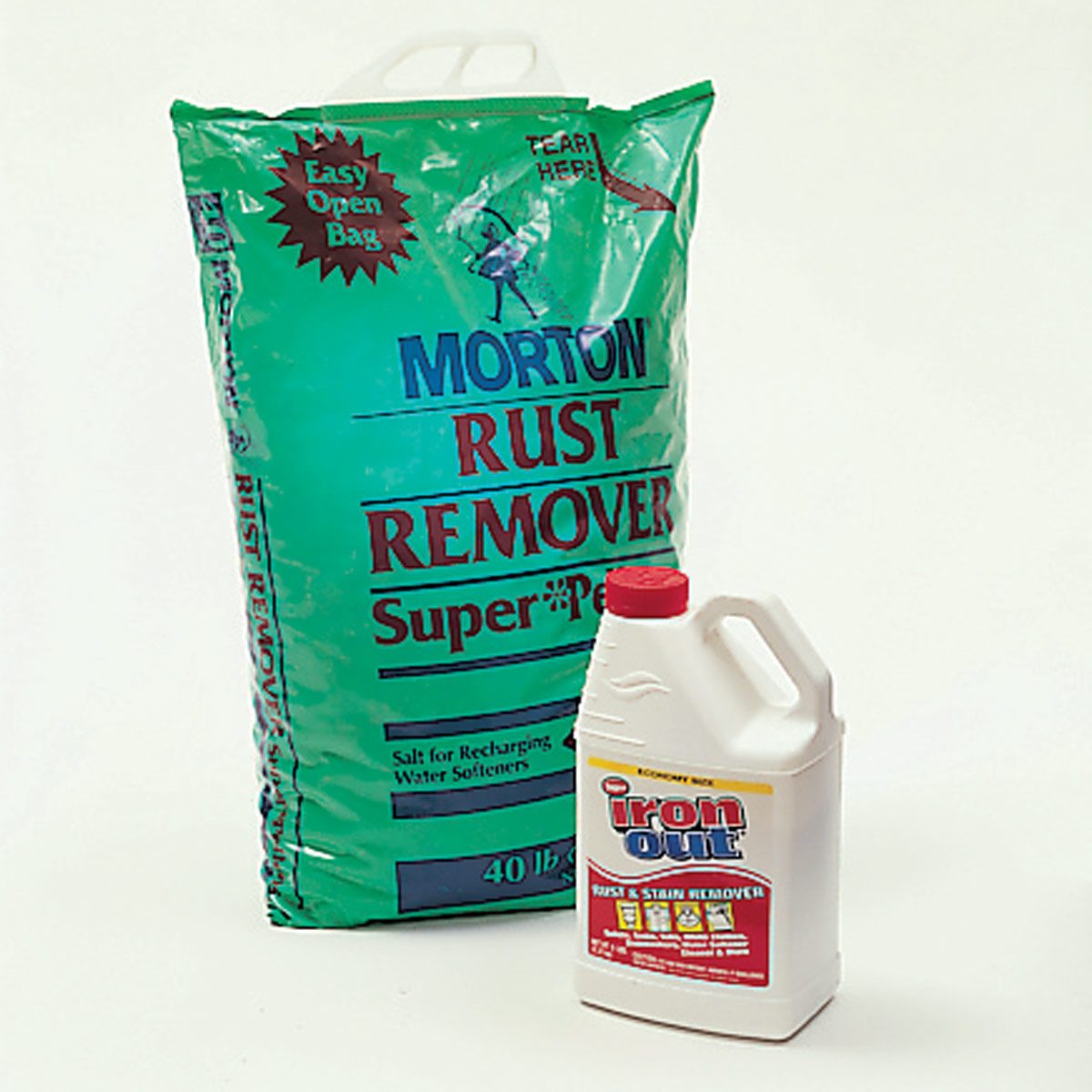
Break Up Salt Bridges
A “bridge” of salt can form in the brine tank—essentially a fixed crust on top of the salt. Beneath that bridge, the salt gets used up, but the tank still looks full. So if your softener isn’t consuming salt like it used to, ram a broom handle down into the tank. You might find that there’s a hollow cavern under the upper crust. Break up that crust and the problem is solved.
Plus: How to replace a water softener resin bed
3
/
8
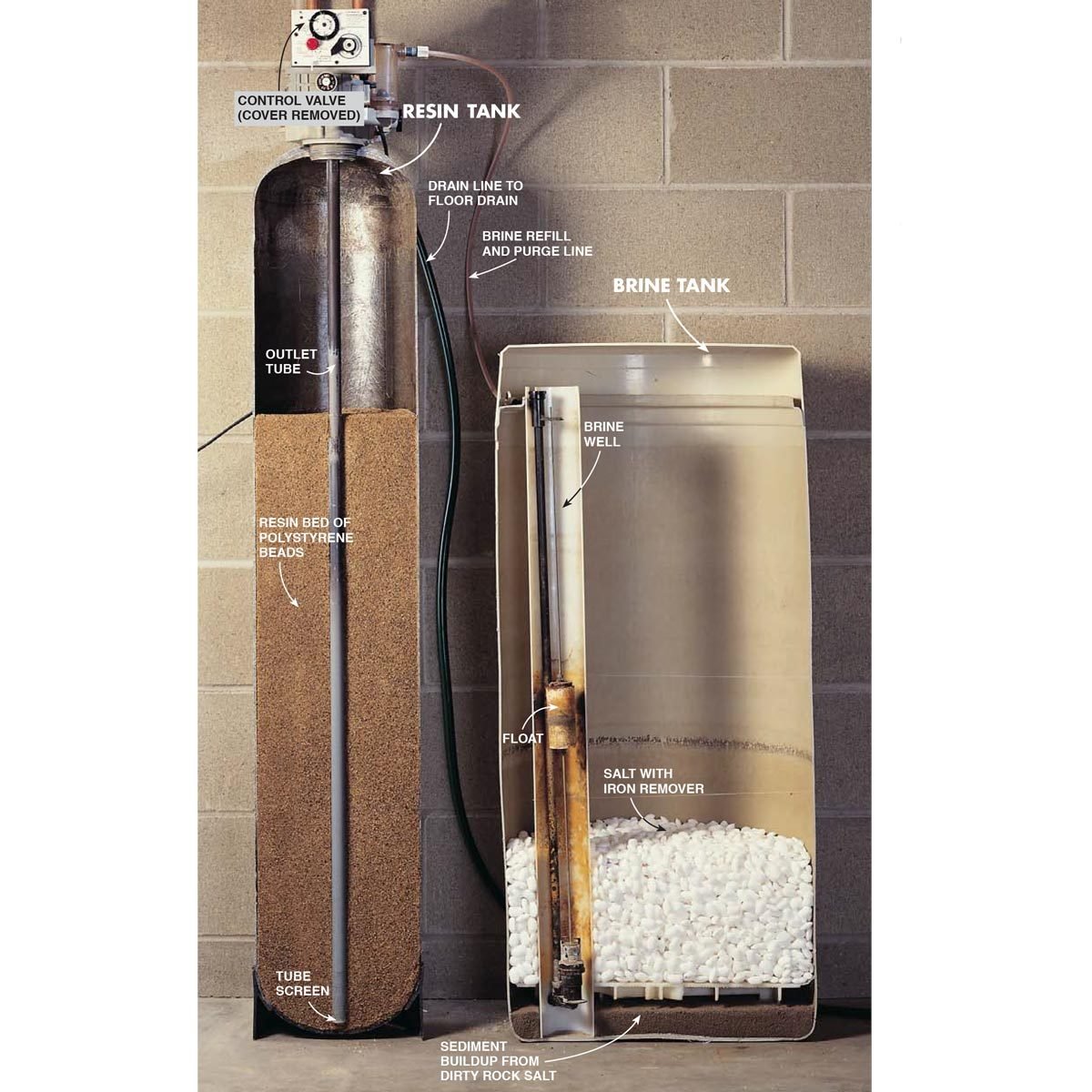
How to Add Salt
Refill the brine tank only when it’s nearly empty and then fill it no more than two thirds full. Filling it too often or too full leads to salt bridges.
4
/
8
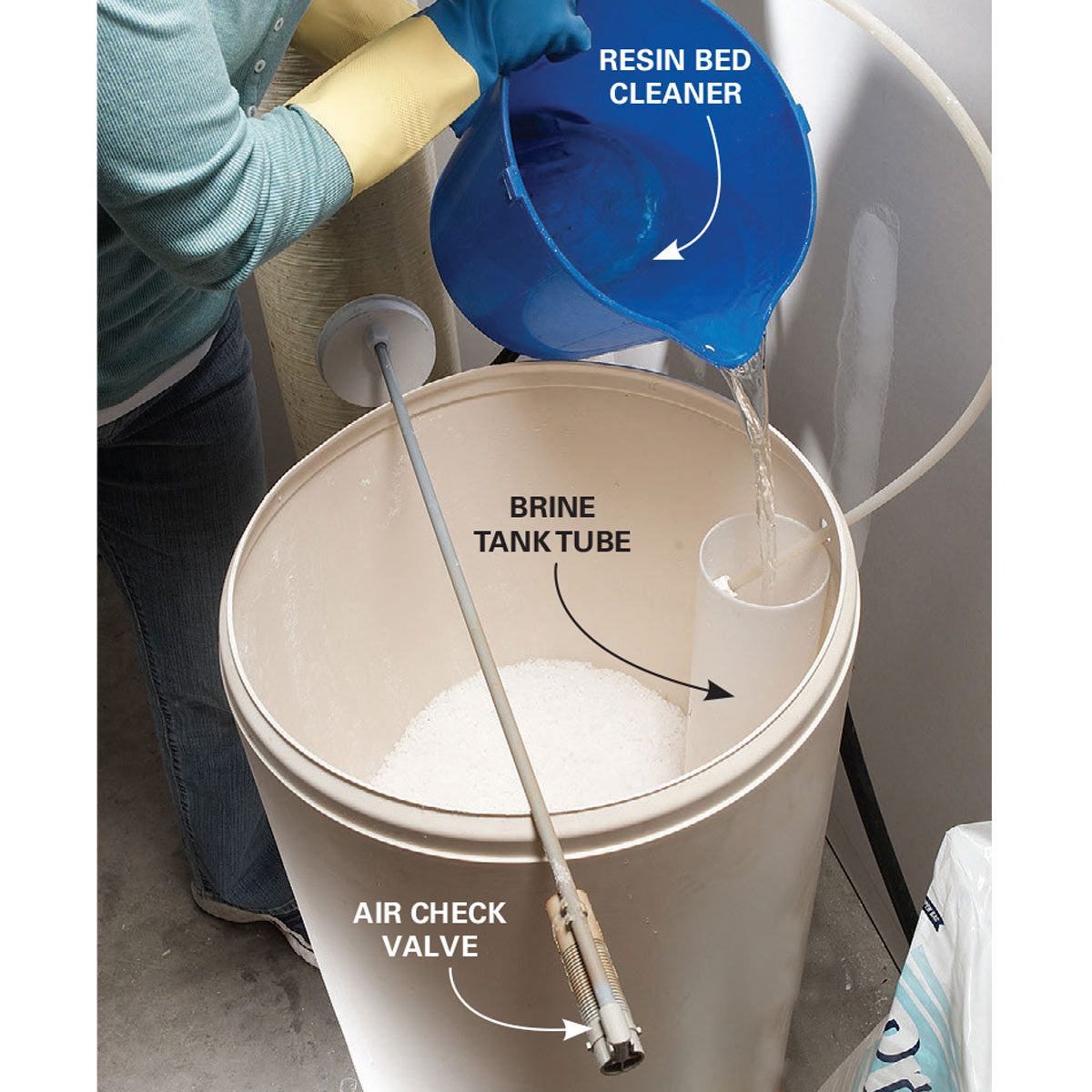
Clean the Resin Bed
If your water contains iron, pour resin bed cleaner into the brine tank tube once or twice per year. Without cleaning, your softener will eventually lose its ability to remove iron. Just pick up some resin bed cleaner at a water softener dealer and follow the simple directions.
For more tips on cleaning your water softener click here.
5
/
8
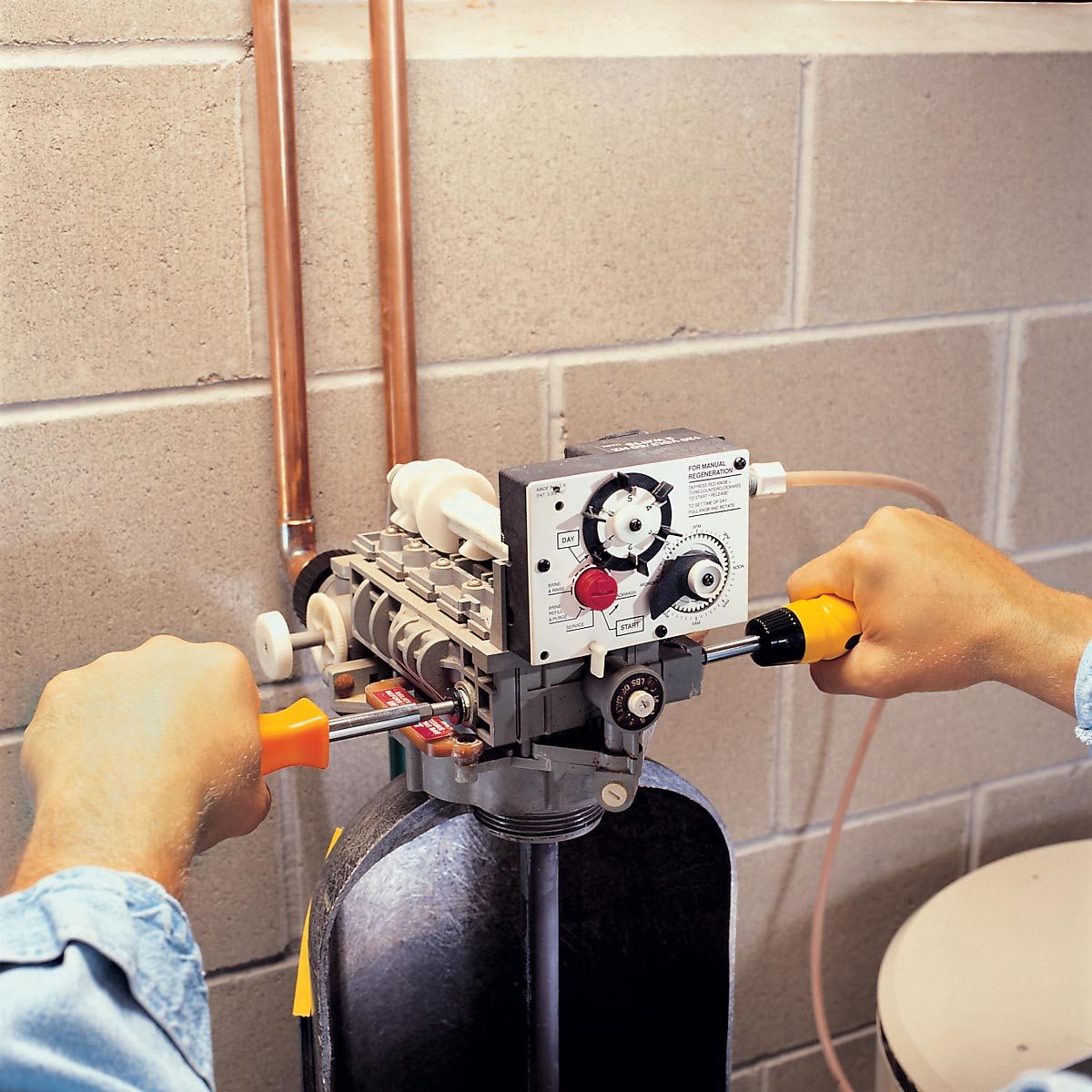
Adjust the Softness
Most softeners allow you to remove more minerals or fewer just by turning a dial or pushing a button (check the manual). The mineral content of your water supply can change over time, so you may have to make adjustments to maintain the same level of softness.
6
/
8
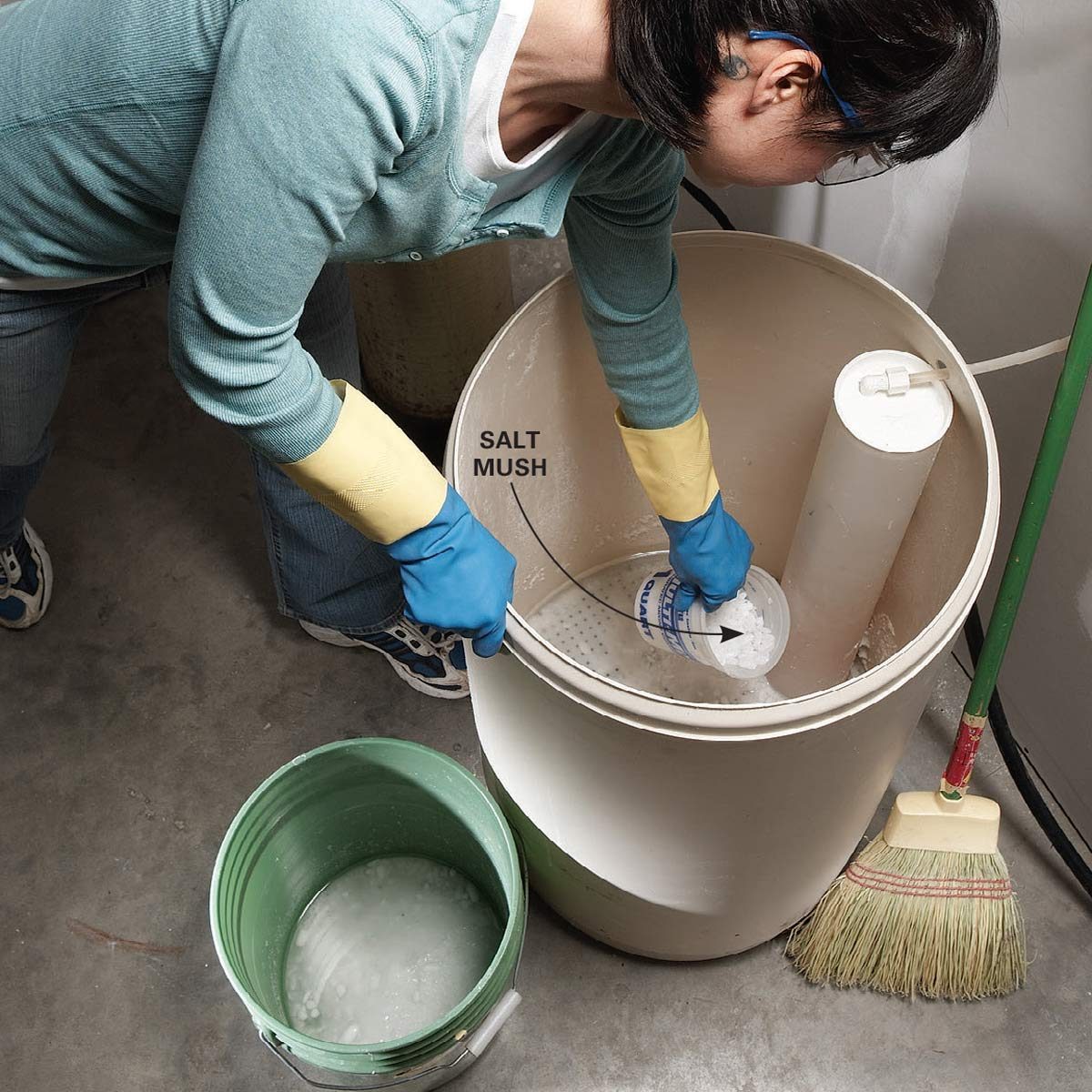
Clean Out the Brine Tank
Wait until the salt level is low and scoop out the salty gunk at the bottom of the brine tank. This mush consists of impurities in the salt, which don’t dissolve well and reduce the performance of the softener. So clean it out once a year.
Plus: Things You’ve Probably Never Cleaned (but Really Should!)
7
/
8
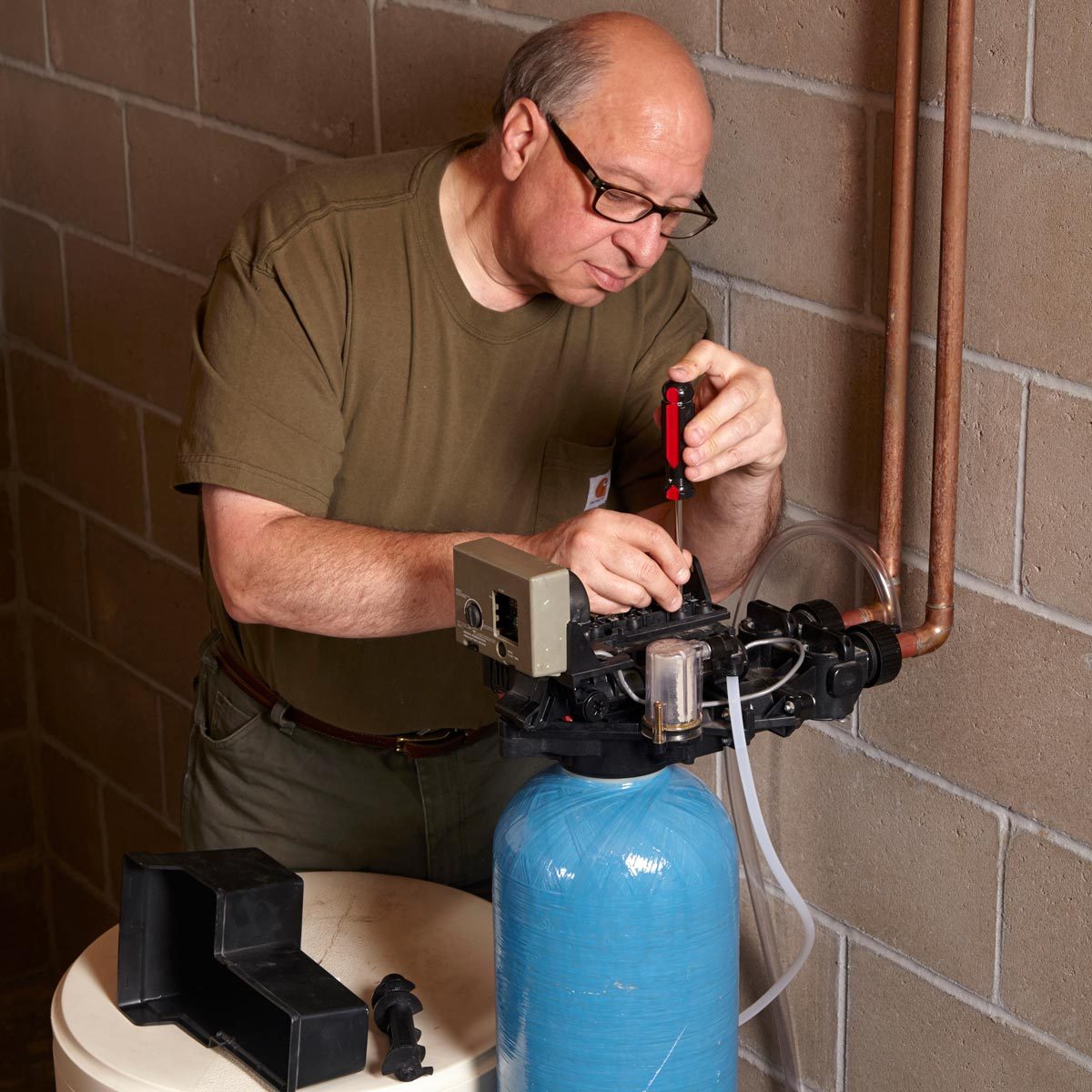
Reset After Power Outages
Your softener is probably set to clean and recharge the resin bed at night while you’re sleeping. But after a long power outage, it might recharge as usual, not recharge at all or do it in the morning, delaying your morning shower and making you late for work. To reset the timer, check the owner’s manual.
8
/
8
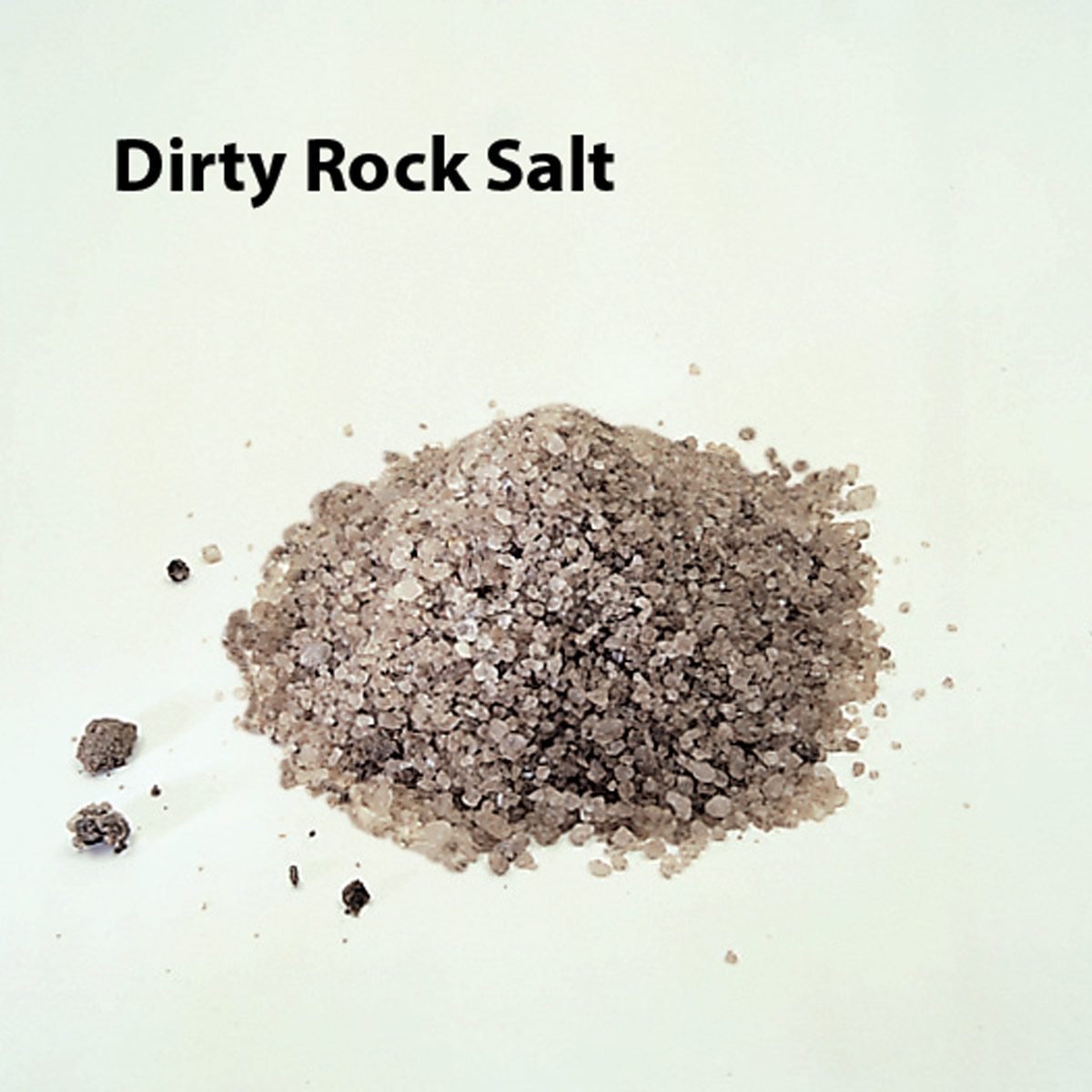
Cheap Salt is Expensive
"When I was a young, dumb cheapskate, I saved a few bucks by using rock salt in my softener. It worked fine for a few years, but eventually the impurities in that dirty salt plugged up parts, wrecked valves and cost me a pretty penny for a complete replacement. As an older, wiser cheapskate, I’m now happy to pay a couple bucks more for salt."
— Gary Wentz, The Family Handyman Editor in Chief